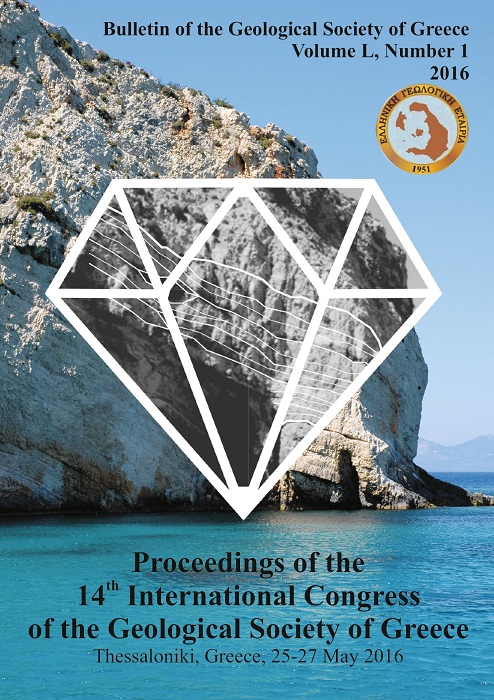A MULTIDISCIPLINARY INVESTIGATION AT THE LASTROS-SFAKA GRABEN, CRETE

Περίληψη
Στην παρούσα εργασία μελετήθηκε η τεκτονική τάφρος Σφάκα - Λάστρος στην ανατολική Κρήτη. Με την χρήση ενός t-LiDAR, σαρώθηκαν συνολικά 1.3 χλμ. του κρημνού του ρήγματος στο Λάστρος και εντοπίστηκαν περιοχές που δεν είχαν επηρεαστεί από εξωγενής διεργασίες (ανθρωπογενείς επεμβάσεις, διάβρωση και απόθεση υλικού). Τα προκαταρκτικά αποτελέσματα δείχνουν πως ο ρυθμός κατακόρυφης μετατόπισης είναι 0,6±0,15 mm/yr. από την τελευταία παγετώδη περίοδο, σημαντικά μικρότερος από ότι αναφέρεται στην προϋπάρχουσα βιβλιογραφία. Στο ρήγμα υπάρχουν συμπαγοποιημένοι κολλούβιοι σχηματισμοί που σχηματίζουν κώνους κορημάτων κυμαινόμενου πάχους πάνω στον καθρέπτη του ρήγματος. Η εργαστηριακή εξέταση του κολλούβιου σχηματισμού είναι υπό εξέλιξη ώστε να προσδιοριστεί η διαδικασία σχηματισμού. Τα δεδομένα από το γεωραντάρ έδειξαν την παρουσία του κολλούβιου σχηματισμού και στο υπέδαφος του κατερχόμενου τεμάχους. Στο ρήγμα Σφάκα, μέσα σε διανοιγμένο όρυγμα, βρέθηκε υλικό σε ρωγμές δευτερογενής προέλευσης, πιθανά μετά από κάποιον σεισμό. Η χρονολόγηση του υλικού με C14 είναι υπό εξέλιξη.
Λεπτομέρειες άρθρου
- Πώς να δημιουργήσετε Αναφορές
-
Mason, J., Schneiderwind, S., Pallikarakis, A., Wiatr, T., Mechernich, S., Papanikolaou, I., & Reicherter, K. (2016). A MULTIDISCIPLINARY INVESTIGATION AT THE LASTROS-SFAKA GRABEN, CRETE. Δελτίο της Ελληνικής Γεωλογικής Εταιρείας, 50(1), 85–93. https://doi.org/10.12681/bgsg.11704
- Ενότητα
- Τεκτονική Γεωλογία

Αυτή η εργασία είναι αδειοδοτημένη υπό το CC Αναφορά Δημιουργού – Μη Εμπορική Χρήση 4.0.
Οι συγγραφείς θα πρέπει να είναι σύμφωνοι με τα παρακάτω: Οι συγγραφείς των άρθρων που δημοσιεύονται στο περιοδικό διατηρούν τα δικαιώματα πνευματικής ιδιοκτησίας επί των άρθρων τους, δίνοντας στο περιοδικό το δικαίωμα της πρώτης δημοσίευσης. Άρθρα που δημοσιεύονται στο περιοδικό διατίθενται με άδεια Creative Commons 4.0 Non Commercial και σύμφωνα με την οποία μπορούν να χρησιμοποιούνται ελεύθερα, με αναφορά στο/στη συγγραφέα και στην πρώτη δημοσίευση για μη κερδοσκοπικούς σκοπούς. Οι συγγραφείς μπορούν να: Μοιραστούν — αντιγράψουν και αναδιανέμουν το υλικό με κάθε μέσο και τρόπο, Προσαρμόσουν — αναμείξουν, τροποποιήσουν και δημιουργήσουν πάνω στο υλικό.





